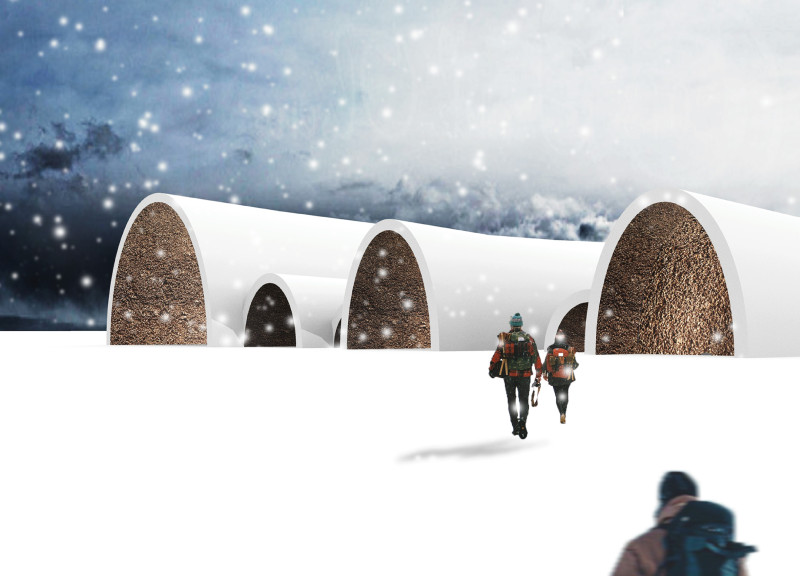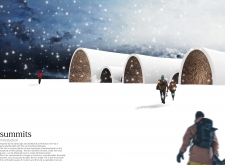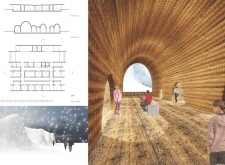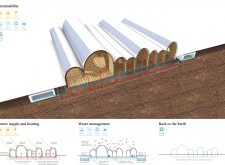5 key facts about this project
### Overview
Located in high-altitude regions, the project "Summits" is designed to harmonize with the rugged landscape and traditional architectural practices of the Himalayan environment. The structure provides a functional and comfortable space for visitors and climbers while prioritizing sustainability and ecological integrity. By integrating innovative design with a respect for its natural context, "Summits" creates a dialogue between contemporary architecture and the surrounding terrain.
### Material and Structural Strategy
The architectural language of "Summits" draws on the visual characteristics of mountain formations, employing a series of curved, vault-like structures that enhance both form and function. The exterior features segmented arches that mimic the mountain silhouettes, constructed from locally sourced materials suitable for high-altitude conditions. Key materials include rammed earth, which offers thermal mass and insulation, and lime, which provides durability. The use of lightweight chalk and gravel enhances structural stability, while wooden finishes and expansive glass openings in the interior foster a warm atmosphere and a direct connection to the landscape. This careful selection of materials not only supports performance but also reinforces the project's intent to align with and reflect the surrounding nature.
### Sustainability Measures
The design embodies a commitment to sustainability through its energy-efficient strategies and water management systems. Solar panels are proposed for harnessing renewable energy, complemented by thermal insulation derived from rammed earth to minimize heat loss. Additionally, an integrated rainwater harvesting system ensures responsible water management in delicate high-altitude ecosystems. The structure is designed to be recyclable, highlighting an innovative approach to waste reduction and the ethos of reconnecting with the earth. This architectural endeavor exemplifies how traditional construction methods can be merged with contemporary sustainability practices, addressing both environmental and human needs within challenging terrains.






















































